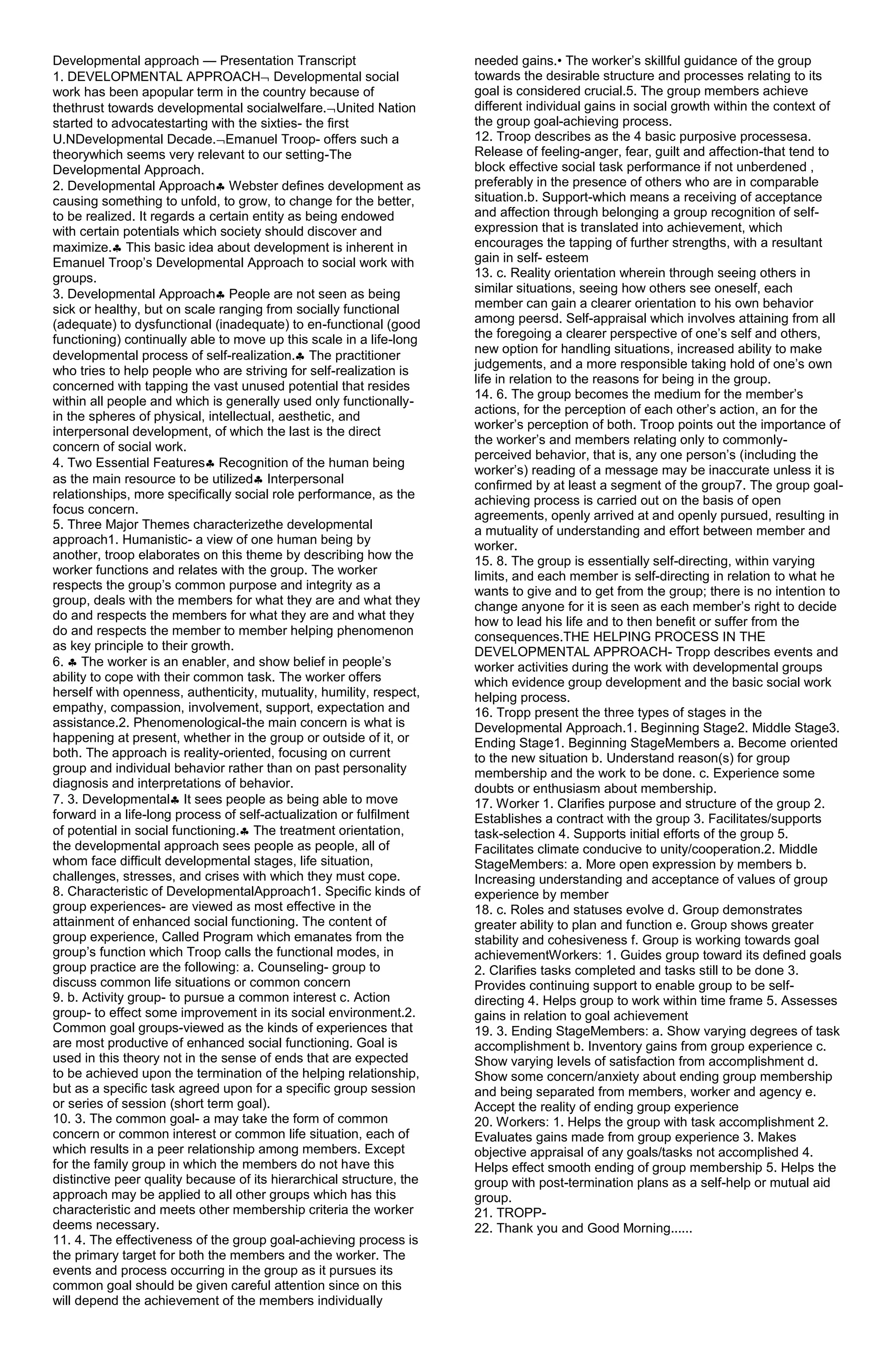This document outlines Emanuel Troop's developmental approach to social work with groups. It discusses the key features of this approach, including recognizing individuals as resources that can develop and focusing on interpersonal relationships and social roles. The developmental approach sees people on a continuum from dysfunctional to fully functional and aims to help them realize their potential. It also outlines the three stages - beginning, middle, and ending - that groups progress through in this approach. The worker's role is to support the group's self-direction and goal achievement at each stage.
